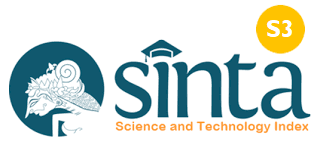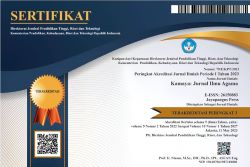Eksistensi Bahasa Bali Di Ranah Milenial (Studi Kasus Kemunculan Parodi Hai Puja)
Abstract
This research analyzes some parody videos of "Hai Puja" titled "Anak Kuliah Jaman Now", "Mantu Cager", "Happy Mother's Day, Memek", and "Celengan Out" which has been watched by thousands of people is a Bali-language video using Balinese language with a sense of comedy that is full of meaning and messages that fit the social context of contemporary society, especially in Bali. The use of the Balinese language in this video is a proof of the existence of the Balinese language in the Millenial era. The proof, this video audience is mostly a group of teenagers who enjoy it through uploading social media instagram, facebook, and youtube. Terms popularized in the language of Bali was much followed and discussed actively by the community, especially teenagers. Balinese language is a language that serves as a communication tool for the people of Bali, because the language of Bali is the mother tongue for the people of Bali. Balinese language is a reflection of all aspects of human life and also as a language of instruction in the social. Balinese language has a position and function that is able to become the identity and identity of Balinese people. As for some functions of the language of Bali is very important for the community, among others, as a symbol of pride of Bali, as a means of communication or liaison in the community, as the identity of the people of Bali.
References
Dhana, I Nyoman. 1994. Pembinaan Budaya Dalam Keluarga Daerah Bali. Jakarta
Dirgeyasa, I Wayan. 2016. Potret Penggunaan Bahasa Bali Bagi Komunitas Bali Di Kota Medan. Unika Atma Jaya.
Eny Parwati, Sang Ayu Putu. 2011. Kebertahanan Bahasa Bali Komunitas Remaja Kuta, Badung. Jakarta: Badan Pengembangan dan Pembinaan Bahasa.
Kunjana Rahardi. Urgensi Memakai Bahasa Sendiri. Harian Jogja, 23 Juli 2008.
Mahsun. 2007. Metode Penelitian Bahasa. Jakarta: PT Raja Grafindo Persada.
Miles, M. & Huberman, A.M. 1992. Analisis Data Kualitatif . Diterjemah- kan oleh Tjetjep Rohendi Rohidi. Jakarta: Universitas Indonesia Press.
Partana, Paina dan Sumarsono. 2004. Sosiolinguistik. Yogyakarta: Sabda bekerja sama dengan Pustaka Pelajar.
Suastra, I.M. 2002. “Categorisation of Balinese Speech Levels” Austronesia: Bahasa, Budaya, dan Sastra. Denpasar: CV. Bali Media Adhikarsa.
Sudarsana, I. K. (2015). Peran Pendidikan Non Formal dalam Pemberdayaan Perempuan. In Seminar Nasional (No. ISBN: 978-602-72630-0-0, pp. 135-139). Lembaga Penelitian dan Pengabdian Pada Masyarakat IHDN Denpasar.
Sugiyono. 2008. Metode Penelitian Pendidikan: pendekatan kuantitatif, kualitatif, dan R&D (Bandung: CV. Alfabeta.
Suhardi, B. 1996. Sikap Bahasa: Suatu Telaah Eksploratif atas Sekelompok Sarjana dan Mahasiswa di Jakarta. Depok: Fakultas Sastra UI.
www.ui.edu. “Ayip Rosidi dan Kepunahan Bahasa Daerah”. Diakses tanggal 2 Februari 2018.
Downloads
Published
How to Cite
Issue
Section
License
An author who publishes in the Kamaya : Jurnal Ilmu Agama agrees to the following terms:
- Author retains the copyright and grants the journal the right of first publication of the work simultaneously licensed under the Creative Commons Attribution-ShareAlike 4.0 License that allows others to share the work with an acknowledgement of the work's authorship and initial publication in this journal
- Author is able to enter into separate, additional contractual arrangements for the non-exclusive distribution of the journal's published version of the work (e.g., post it to an institutional repository or publish it in a book) with the acknowledgement of its initial publication in this journal.
- Author is permitted and encouraged to post his/her work online (e.g., in institutional repositories or on their website) prior to and during the submission process, as it can lead to productive exchanges, as well as earlier and greater citation of the published work (See The Effect of Open Access).
Read more about the Creative Commons Attribution-ShareAlike 4.0 Licence here: https://creativecommons.org/licenses/by-sa/4.0/.





